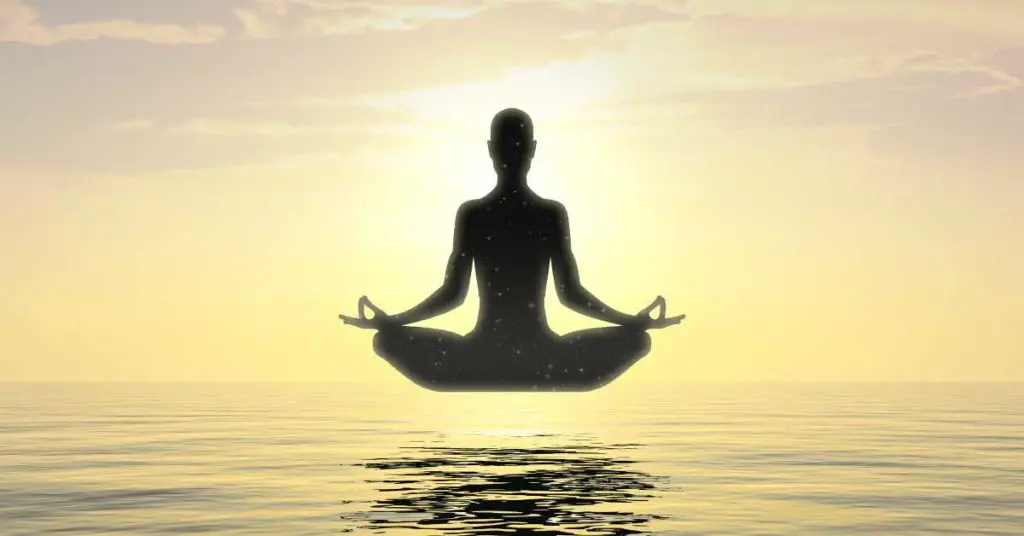Vipassana meditation is an ancient practice that helps to develop mindfulness and self-awareness. Also known as insight meditation, this form of meditation encourages practitioners to focus on their breath and observe their thoughts and emotions without judgment. Over time, this can help to develop a deeper understanding of oneself and the world around them. Vipassana meditation is often taught in 10-day retreats, during which practitioners live in silence and follow a strict schedule of meditating for 10 hours each day. However, it is also possible to learn Vipassana meditation through online courses or books. Although it can be challenging at first, the benefits of this practice make it well worth the effort.
In vipassana meditation, you sit with your spine straight and your eyes closed. You may have your hands resting in your lap with the palms up, or you may clasp them together in front of you. Some people find it helpful to focus their attention on their breath as they sit. Others prefer to simply let their minds wander freely. Whichever approach you choose, the key is to remain relaxed and still while allowing all thoughts and sensations to come and go without judgment.
How to sit in vipassana meditation
The most important thing to remember when sitting in vipassana meditation is to maintain a straight spine. This will help you to focus your attention on your breath and prevent you from falling asleep. The half lotus pose is a good option for beginners, as it is relatively easy to maintain the proper spine alignment. However, experienced meditators may find that the full lotus pose or the Burmese posture provides a more stable base. Whichever position you choose, be sure to place your palms facing up on your lap so that you can easily observe your breath. Start by focusing your attention on the sensation of your breath entering and exiting your nose. Once you have found your center, you can begin to expand your awareness to include the entire body.
Pay attention to the sensations that you are feeling in each part of your body and notice how they change over time. If you find your mind wandering, simply bring your attention back to your breath. With practice, you will develop greater focus and concentration. Over time, you may even find that you are able to remain aware of your thoughts and emotions without getting caught up in them. Vipassana meditation can be a powerful tool for developing self-awareness and insight. By taking the time to sit in silence and observe your thoughts and feelings, you can learn a great deal about yourself and the world around you.
The significance of the vipassana sitting position
The significance of the vipassana sitting position is important for several reasons. First, being comfortable is necessary for you to be able to relax and to endure sitting for longer periods. However, while being comfortable is important, there are still other key factors to the positions that you must keep in mind in order for it to work for you. Equanimity and balance are the backbones of Vipassana and a lot of the Theravada teachings in general. The Buddha taught what was called “The Middle Way”, which is to avoid extremes and to exercise balance in our daily lives. For this reason, you don’t want to become “too comfortable”. After sitting for a while your body may start to collapse. You might find yourself swaying and slumping over. If you become “too relaxed” this will eventually become a passive state and your attention will wander. The key is to find a balance between relaxation and alertness, a state of ease without drowsiness.
Secondly, the way you sit plays a role in how effective your meditation will be. The spine should be straight but not stiff, the chin slightly tucked in, and the eyes closed or focused on a point in front of you. This allows you to breathe deeply and evenly without strain, promoting both concentration and relaxation.
Thirdly, the position of your hands is also significant. There are several traditional mudras (hand positions) that are often used in meditation, but the most common is simply resting your palms face-up on your thighs with the thumbs lightly touching. This position helps to ground you and provides a sense of calmness and openness. By keeping these things in mind, you can ensure that your sitting position will be both comfortable and effective.
Tips for beginners who want to learn Vipassana meditation
There are many ways to learn Vipassana meditation, but the 10-day silent retreat is the most traditional method. This type of retreat provides participants with an opportunity to immerse themselves in the practice and to receive guidance from experienced teachers. However, it is also possible to learn Vipassana meditation through online courses or books. If you are a beginner, here are a few tips to help you get started:
1. Choose a comfortable sitting position. As mentioned above, it is important to maintain a straight spine when sitting in vipassana meditation. Half lotus, full lotus, and Burmese posture are all good options. Experiment with different positions until you find one that feels comfortable for you.
2. Start with a short meditation. If you are new to meditation, it is best to start with a short practice of 5-10 minutes. You can gradually increase the length of your sessions as you become more comfortable with the practice.
3. Focus on your breath. One of the simplest ways to focus your attention in vipassana meditation is to simply observe the sensation of your breath entering and exiting your nose. Once you have found your center, you can begin to expand your awareness to include the entire body.
4. Be patient. Learning meditation takes time and patience. Don’t be discouraged if you find it difficult to focus at first – just keep practicing and it will get easier over time.
5. Find a teacher. If you want to learn Vipassana meditation, it can be helpful to find a qualified teacher. A good teacher can provide guidance and support that is essential for beginners.
Following the traditional 10-day silent retreat model or by finding an online course or book that suits your needs. Remember to start slowly, focus on your breath, and be patient with yourself. With time and practice, you will develop greater focus and concentration. Who knows – you may even find that you are able to observe your thoughts and emotions without getting caught up in them. Vipassana meditation can be a powerful tool for developing self-awareness and insight, so why not give it a try?
The challenges of learning and practicing Vipassana meditation
Learning Vipassana meditation can be a challenge, particularly for beginners. The practice requires patience, discipline, and a willingness to sit in silence for long periods of time. In addition, the 10-day silent retreat model can be daunting for some people. However, there are many ways to learn Vipassana meditation, so don’t be discouraged if the traditional method doesn’t seem like a good fit for you. Remember, the key is to find a method that works for you and to be patient with yourself as you learn the practice. With time and effort, you will develop greater focus and concentration. Who knows – you may even find that you are able to observe your thoughts and emotions without getting caught up in them. Vipassana meditation can be a powerful tool for developing self-awareness and insight, so why not give it a try?
Why it’s worth the effort to learn and practice this form of meditation
Vipassana meditation can be a powerful tool for developing self-awareness and insight. The practice can help you to observe your thoughts and emotions without getting caught up in them. In addition, Vipassana meditation can help to develop greater focus and concentration. If you are willing to put in the time and effort, learning Vipassana meditation can be a rewarding experience.
Conclusion
Vipassana meditation is an effective way to become more self-aware and introspective. The practice can be tough, especially for those new to it, but the rewards are worth the struggle. If you’re willing to put in the work, learning Vipassana meditation can be a rewarding experience.












